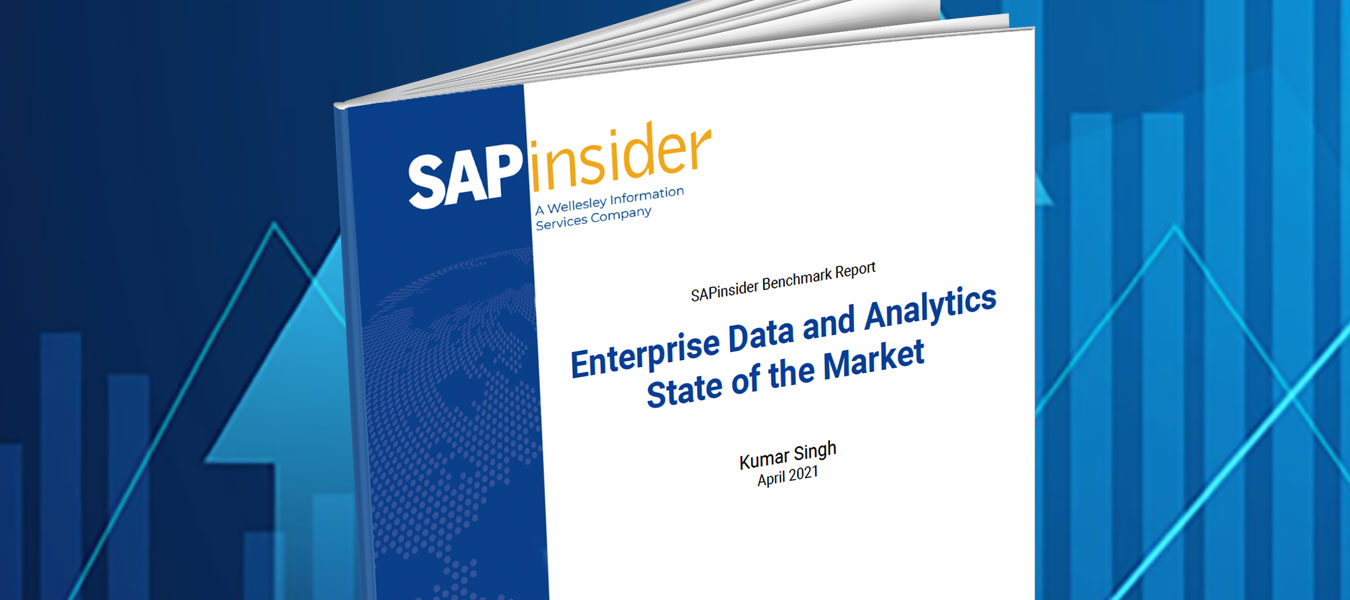Pairing Analytics and Automation
By Pierce Owen, VP of Research, SAPinsider
Translating Data into Insights
As part of their “digital transformation,” 75% of respondents in a recent SAPinsider survey say their organizations use or plan to use self-service analytics for operational performance. Self-service analytics help democratize analytics, allowing the average business user to visualize raw data, identify outliers or errors, and set up alerts for when an issue arises. Self-service analytics empower operations professionals to track KPIs and find bottlenecks, both in current operations and in simulations or forecasts for the future. They can also help identify data quality issues and make sure that master data meets business rules.
Often, master data contains outdated information. For example, material masters include the number of days needed to provision supplies from suppliers. In reality, that provisioning might take more or less time on average. Analytics solutions can show material master values versus actual values and averages.
To get the most out of their enterprise data, organizations need data connectivity between their analytics solutions and the diverse, distributed data sets across multiple ERPs and other systems. The average member of the SAPinsider Community runs six instances of ERP, and 38% run at least one non-SAP ERP system. These members need analytics solutions that can integrate with data not only from all their SAP systems but also their non-SAP systems to get the full picture of enterprise operations.
Unfortunately, even when they have access to enterprise-wide insights, when it comes to taking action to address issues discovered through analytics, business users often have no easy way to achieve that.
From Insights to Action
Many business users can quickly find issues in their data thanks to analytics tools, but it can then take an inordinate amount of time for them to clean or redefine master data or clean up polluted sales or purchase orders.
By integrating operational analytics with process automation, organizations can quickly react to insights unsurfaced by analytics and address issues.
In the material master example, if a business user discovers a discrepancy between the days needed to receive supplies in the master data versus reality, this user could update the master data with the click of a button if the organization has integrated automated data management with its self-service analytics.
As another example, a major beer producer in Europe had inaccurate and outdated sales and purchase orders in its ERP systems. This messed up MRP runs because the MRP process allocated inventory for the polluting orders. The beer producer now uses Magnitude Every Angle operational analytics to identify the polluted orders and can clean them up with minimal effort with Magnitude Innowera Process Runner. The means the ERP systems run MRP processes much more predictably and accurately, and it has cleaned up inventory with less dead stock.
What Does This Mean for SAPinsiders?
When considering trends in self-service operational analytics and automated data management, SAPinsiders should:
- Implement self-service analytics tools. As part of any digital transformation, organizations need to democratize analytics and adopt software solutions with which business users can generate value without heavy day-to-day IT involvement.
- Consider analytics and automation solutions that integrate with multiple ERP systems. To get the full picture of enterprise operations, SAPinsiders need solutions that integrate with all of their enterprise systems, both SAP and non-SAP.
- Evaluate the different applications and potential value of analytics and automation. This article outlines a couple potential areas of value in maintaining master data and cleaning up polluted sales and purchase orders for MRP runs. Organizations should evaluate the types of bottlenecks and insights they discover through analytics and how automation solutions might help them address these issues.
- Integrate operational analytics with process automation. To quickly take action based on insights in a scalable way, organizations need some form of integrated automated data management or process automation.





